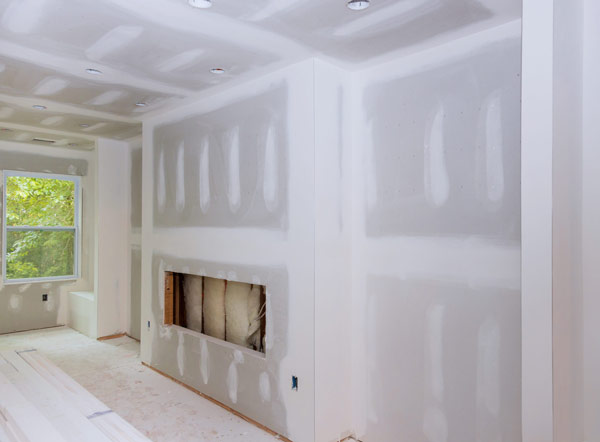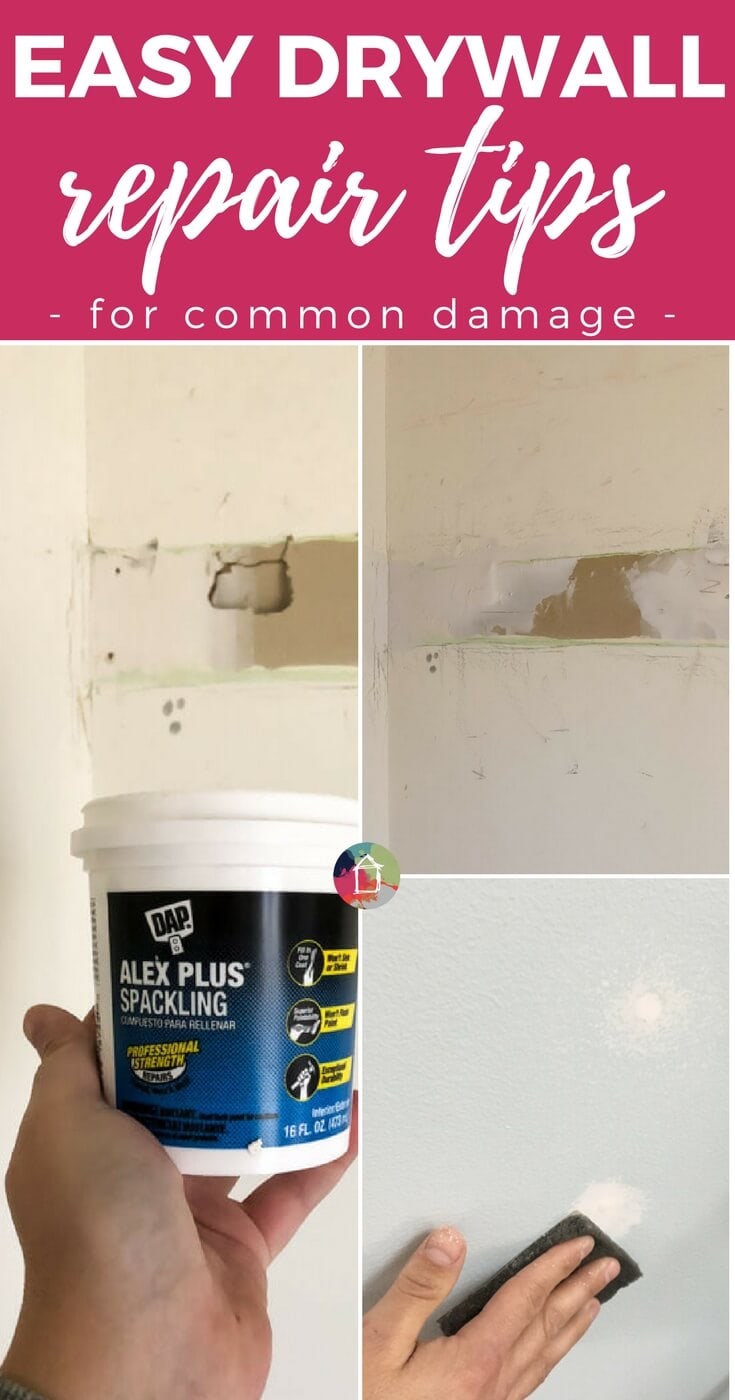Discover the Finest Practices for Effective Drywall Repair Service and Installation
The art of drywall fixing and setup calls for a blend of ability and precision. Understanding the necessary tools is necessary for achieving a seamless surface. Comprehending the detailed procedure can make a considerable difference in the last outcome. Appropriate techniques for mudding and taping are additionally vital. What remains is the understanding of upkeep that guarantees durability. These components together create a sleek end result worth checking out even more.

Vital Tools for Drywall Repair and Setup
When undertaking drywall repair service and installment, having the right devices can substantially boost the performance and quality of the job. An energy knife is necessary for reducing drywall sheets exactly, while a drywall saw can assist in making more intricate cuts. Taping blades, offered in various sizes, are essential for using joint substance smoothly and uniformly. A drywall sander, ideally with a dust collection feature, aids accomplish a sleek surface, lowering the need for comprehensive cleanup.
Furthermore, a gauging tape guarantees accurate dimensions, and a degree makes certain that installations are straight and plumb. Safety gear, including dust masks and safety glasses, must not be forgotten to protect against debris and dirt. Lastly, a stud finder help in finding mounting members, assuring protected installment. By gearing up oneself with these crucial devices, the repair and setup procedure comes to be more workable and leads to a professional-quality outcome.

Step-by-Step Overview to Patching Holes
Patching holes in drywall needs a methodical method to ensure a smooth fixing. The location around the hole should be cleaned and any kind of loose particles removed. For little openings, a putty knife can be used to use a lightweight spackle, pushing it right into the opening and smoothing the surface area. After it dries, fining sand is important to develop a flat surface. For bigger holes, a patch of drywall might be required. This involves reducing an item of drywall somewhat larger than the opening, protecting it to the wall with screws, and making use of joint substance to cover the seams. As soon as the compound dries, it should be sanded smooth. Ultimately, priming the patched area prior to painting will certainly ensure an even surface. Complying with these actions will cause a professional-looking fixing that blends flawlessly with the surrounding wall surface.
Methods for Smooth Drywall Setup
Achieving seamless drywall installment demands careful preparation and execution. It is essential to gauge and cut drywall sheets properly to decrease gaps. Using an utility knife, installers must rack up the board before breaking it along the cut line, making sure tidy edges. Effectively aligning the sheets is essential; starting from the leading and working down assists keep uniformity.
Securing drywall to the studs needs regular spacing, normally every 16 inches, using screws instead of nails for better hold. This approach decreases the threat of pops in time. Furthermore, surprising the joints between sheets enhances structural integrity and decreases the presence of joints.
Making use of the ideal thickness of drywall for certain areas-- such as moisture-resistant types in washrooms-- additional adds to a perfect coating. Following these methods will certainly lead to a professional-looking and smooth setup, establishing the phase for the subsequent ending up processes.
Finishing Touches: Taping and Mudding
Ending up touches, such as mudding and taping, play a necessary role in accomplishing a refined drywall surface. Insulation involves applying a slim strip of drywall tape over the joints and seams, making certain a seamless look. This process assists prevent fractures and creates a solid bond in between drywall sheets. It is vital to pick the ideal kind of tape, with paper and fiberglass mesh being one of the most usual choices.
Mudding, or applying joint substance, complies with taping. This substance fills up in gaps and ravel the surface for a consistent surface. It is usually used in multiple layers, with each layer requiring to dry prior to sanding. Appropriate strategy involves feathering the sides to blend the substance into the surrounding drywall, lessening exposure.
When completed properly, mudding and taping improve both the structural and visual stability of the drywall installation, causing a professional-quality surface.
Tips for Maintaining Your Drywall After Installment
:max_bytes(150000):strip_icc()/SPR-solutions-to-common-drywall-problems-p2-4120949-hero-c15a37669eae45478eca0cf15b34a1d1.jpg)
In addition, preserving a regular indoor moisture level can stop bending or mold growth. Making use of a dehumidifier in damp areas, like cellars, is advisable. It's additionally useful to periodically repaint locations that visit homepage show wear, as this secures the underlying material. When moving furnishings or installing components, care ought to be worked out to avoid damaging the drywall. By adhering to these upkeep suggestions, homeowners can prolong the pop over to this web-site life of their drywall, guarding it remains an appealing function of their insides.
Frequently Asked Concerns
What Safety And Security Equipment Is Necessary for Drywall Repair Work and Setup?
For drywall repair work and setup, necessary safety and security equipment consists of safety goggles to safeguard eyes, dust masks to stop inhalation of bits, handwear covers for hand defense, and knee pads for convenience during extended kneeling. Interior Painting.
How Do I Identify the Drywall Density Needed for My Task?
To establish the drywall density required for a task, one need to take into consideration the wall surface's architectural demands, local building ordinance, and the intended use the space, usually choosing 1/2-inch or 5/8-inch drywall.
Can I Repair Drywall Without Removing Furniture From the Room?
Yes, drywall can be fixed without eliminating furniture from the room. Careful preparation and protective steps can reduce mess, enabling effective fixings while maintaining bordering items safe from dust and damages throughout the process.
What Sorts of Drywall Are Finest for Different Settings?
Moisture-resistant drywall is suitable for shower rooms and kitchen areas, while soundproof drywall suits shared wall surfaces in houses. Fire-rated drywall is best for garages, and conventional drywall works well generally living locations, making sure toughness and suitability for various settings.
How much time Does It Consider Drywall Mud to Dry Totally?
Drywall mud generally takes 24 to 2 days to completely dry totally, relying on elements like moisture and temperature level (Drywall Repair Ogden UT). Thicker applications might require longer drying out times, while thinner layers can dry out a lot more quickly. Appropriate air flow aids drying
The art of view website drywall fixing and installation needs a mix of skill and precision. When embarking on drywall repair and setup, having the right devices can substantially enhance the effectiveness and top quality of the job. An utility knife is crucial for cutting drywall sheets precisely, while a drywall saw can help in making a lot more detailed cuts. Achieving smooth drywall installation demands cautious preparation and execution. Moisture-resistant drywall is optimal for kitchen areas and washrooms, while soundproof drywall suits shared walls in apartment or condos.